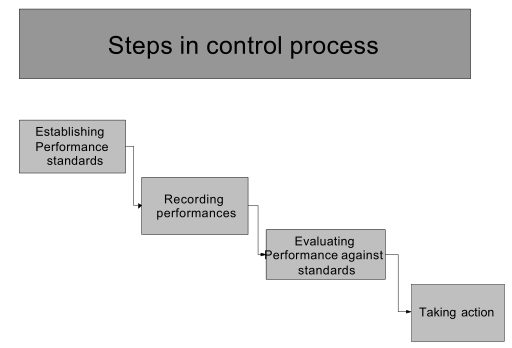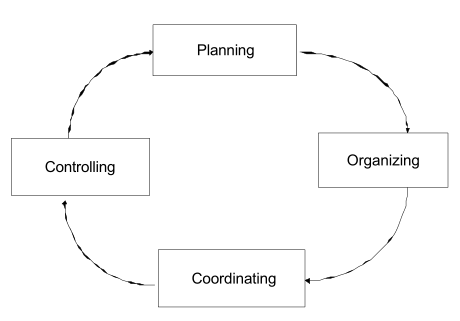What part does controlling play in sales force management? To answer this, let’s review what is involved in the management process. We’ll do this in what is normally visualized, at least in the literature, as a sequence of activities performed more or less in chronological order.
The management process starts when top management makes known the company’s goals, and department heads, including the top sales executive, use them to derive departmental objectives. For the sales department, the next step is to formulate policies and plans to achieve these objectives. Then, the sales management group maps out sales programs and campaigns, determines specific methods and procedures, and takes other needed actions, including making indicated changes in the sales organization to execute the policies and implement the plans. In performing these activities, sales executives coordinate the department’s activities with each other and with related activities performed other departments and by distributive outlets in the marketing channels. Up to this point, then, sales executives focus upon planning, organizing, and coordinating.
Four steps remain in the management process-some refer to it as the “management cycle.” They are

These four steps constitute what is known as control.
In this lesson we will discuss the first step and in the next two lessons the other steps will be covered.
Control, then, has both static and dynamic facets. The first three steps, static, enable sales management to measure the progress toward achieving departmental objectives. If the fourth step in control-action-is not forthcoming the three static steps cannot contribute maximally to sales management, despite the information they provide. Yet the “action” step, the dynamic facet of control, is frequently neglected. By taking the indicated actions, sales management keeps the department “on course.”
Depending upon specific circumstances, sales management may decide:
To take “no action” now
- To take action aimed to increase the degree of attainment of objectives
- To revise the policy or plan or the strategies used in their implementation to facilitate achievement of objectives
- To lower or raise the objectives or the standards or criteria used for measuring their degree of attainment, to make them more realistic.
The managerial functions- planning, organizing, coordinating, and controlling- are not performed in an unchanging straight-line sequence. The order of performance is circular, and nowhere is this better illustrated than in the controlling phase.

The managerial functions- planning, organizing, coordinating, and controlling- are not performed in an unchanging straight-line sequence. The order of performance is circular, and nowhere is this better illustrated than in the controlling phase.
- The decision to set sales performance standards (the first step in control) requires planning. Planning, in turn, means deciding where the sales department is going (that is, setting the objectives) and determining how the department is to get from where it is to where it wants to be.
- The initiation of control through standard setting is realistic only when the capabilities of the sales organization are taken into account; it does little good to set performance standards beyond the capabilities of the sales force.
- For control to reach maximum effectiveness, management must coordinate sale planning with sales efforts. After sales force control is set in motion, more planning, organizing, and coordinating are required. Indeed, the benefits of dynamic control, the initiating of action based on comparisons of actual performances with the standards, are not realized unless sales management takes further planning, organizing, and coordinating steps.

